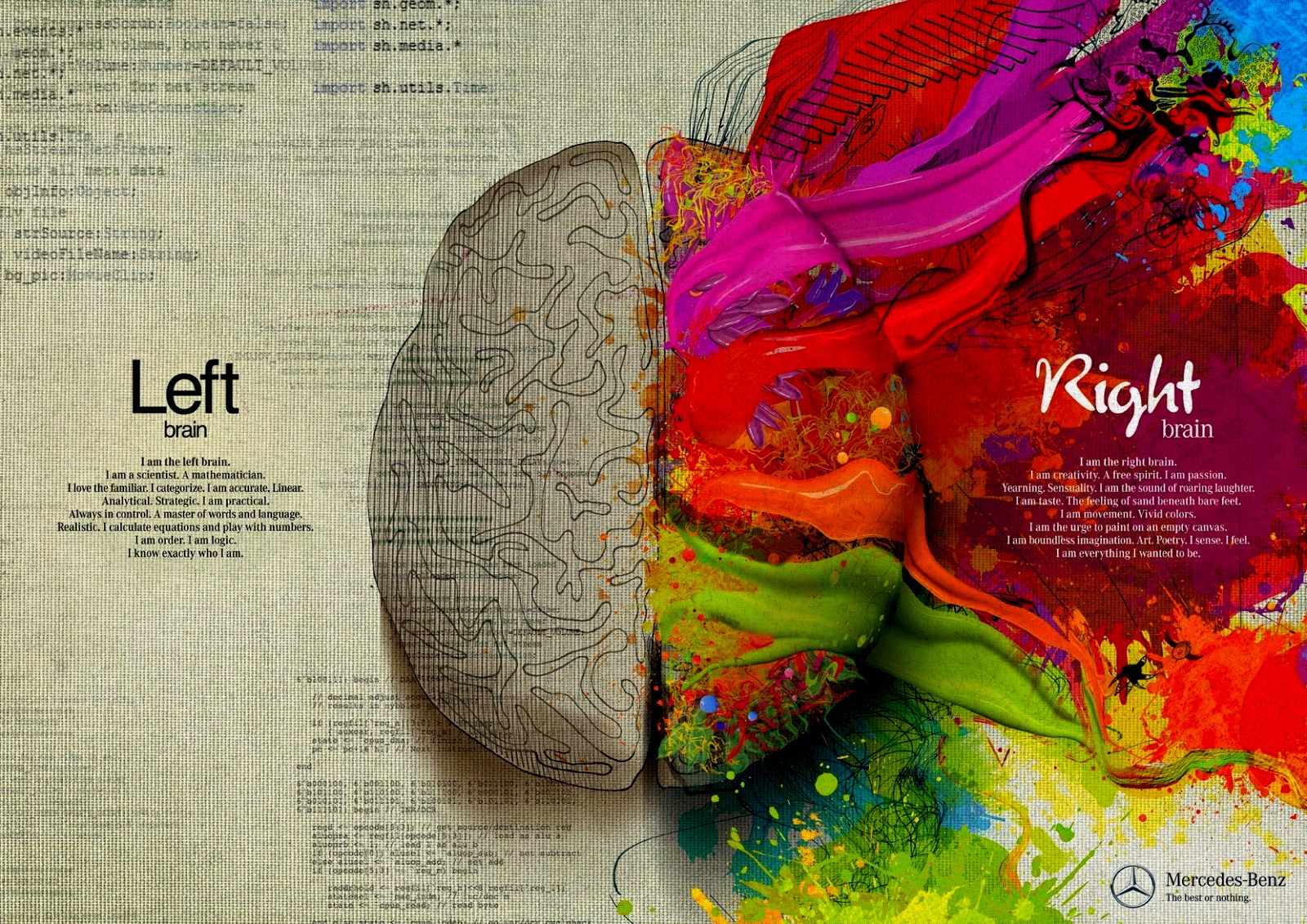Two Sides of the Same Brain
Sometimes, ideas based in science take on a life of their own when they become part of popular culture. One such idea is that people’s personalities are based on whether they are dominantly left-brained or right-brained, a concept seen everywhere from infographics on the Internet to Mercedes Benz advertisements (photo above). As the Mercedes ad suggests, it’s widely believed that people who are left-brained are analytical, logical and verbose, while right-brainers are creative freethinkers who follow their intuition. This sounds like a simple neurological explanation for the differences in people’s personality — the problem is, it’s not backed up by any real evidence. So where did this idea come from?
The concept might have entered the mainstream in in the 70’s, based on Roger Sperry’s Nobel Prize winning research on “lateralization” — or how the brain localizes some activities to either hemisphere. His research demonstrated for the first time that each side of the brain had different cognitive abilities. As the idea reached a pop culture audience, lots of people “over-interpreted” his research and continued to expand on it, which could be one reason why the left-brain / right-brain myth still persists.
“No matter how lateralized the brain can get, though, the two sides still work together. The pop psychology notion of a left brain and a right brain doesn’t capture their intimate working relationship.”
Realistically, each person’s brain is different in how and where it processes information, but both sides are always working together because they’re physically connected by a thick nerve bundle. For the majority of people, the left side of the brain has has processing centers that handle language and analysis, while the right deals with sight and emotions. This might explain why people believe the generalizations that left-brained people are better at math and right-brained people are better artists. Interestingly, these processing centers are swapped in 30% of left handed people, which just goes to show that general statements about the brain can’t be applicable to everyone.
Researchers even conducted a study (PLOS One) that specifically looked at whether people used one hemisphere of their brain more than the other while doing tasks inside an MRI machine -- and ultimately found no evidence of “sidedness”! They reviewed brain scans of over 1,000 people and analyzed over 7,000 different brain regions to determine if one side was more dominant than the other side. Ultimately they saw that while individuals had some unique differences, both hemispheres of the brain always communicated and worked together. At the end of the day, neuroscientists still don’t have any evidence that your personality is governed by lateralization, regardless of which hemisphere your Wernicke's Area is in.
The science out there shows the left-brain / right-brain concept is more of a metaphor than a truth based in science, but it’s true that certain brain regions can differ from person to person. Even though many of us identify with personality traits such as “creative” or “analytical”, it’s a misunderstanding to believe that such traits have something to do with which side of your brain is working harder. The neuroscience of personality is a topic for another day, so in the meantime ditch the notion that you’re governed by one side of your brain, and embrace your brain-ambidexterity.
